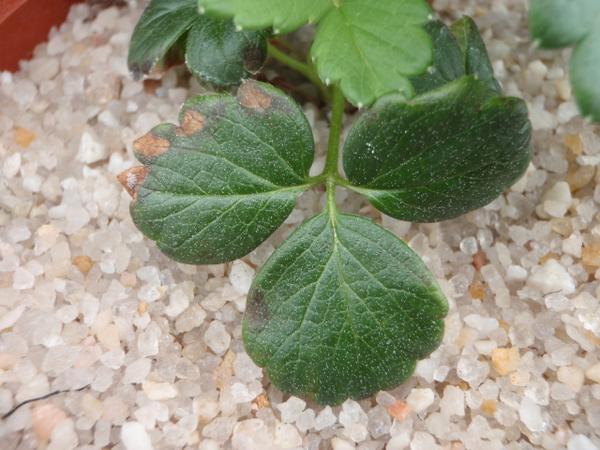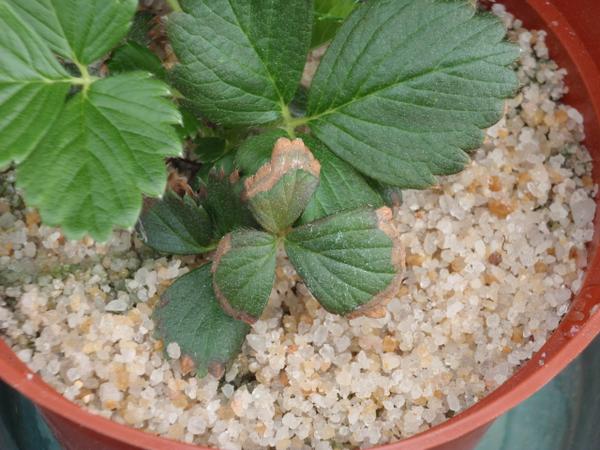Problem
Nutritional disorder – sodium (Na) toxicity
Symptoms
Lower leaves with necrotic spotting, followed by the development of a marginal necrotic band. Under severe conditions, symptoms can spread over the entire leaf and also develop further up the plant. Plant growth can be stunted.
Similar Problems
Leaf necrosis symptoms also occur with boron (B) toxicities.
Additional Information
Typically excess sodium levels come from the irrigation water. Test your water supply for nutrient levels.
Diagnostic Tips
Submit a leaf sample for nutrient analysis. Values above 0.1% (1000 ppm) would be considered excessive.
Corrective Measures
In the short term, it is difficult to correct excess levels. Damage to the plants cannot be reversed. Overhead irrigations my help leach some of the sodium out of the root zone (but irrigations need to be managed to avoid gray mold).
Management
Sodium can be leached, especially in sandy soils. Determine the source of sodium in your system and try to eliminate it. Change irrigation water source if possible.
Useful Resources
Strawberry Tissue Analysis – North Carolina
Fertilization of Strawberries in Florida – Florida
Funding Sources
Funding was provided in part by the National Sustainable Agriculture Program: Sustainable Strawberry Initiative and the following sources.
A thank you is also expressed to Kube Pak of Allentown, New Jersey for donating strawberry plants.
Publication date: April 23, 2014
N.C. Cooperative Extension prohibits discrimination and harassment regardless of age, color, disability, family and marital status, gender identity, national origin, political beliefs, race, religion, sex (including pregnancy), sexual orientation and veteran status.




